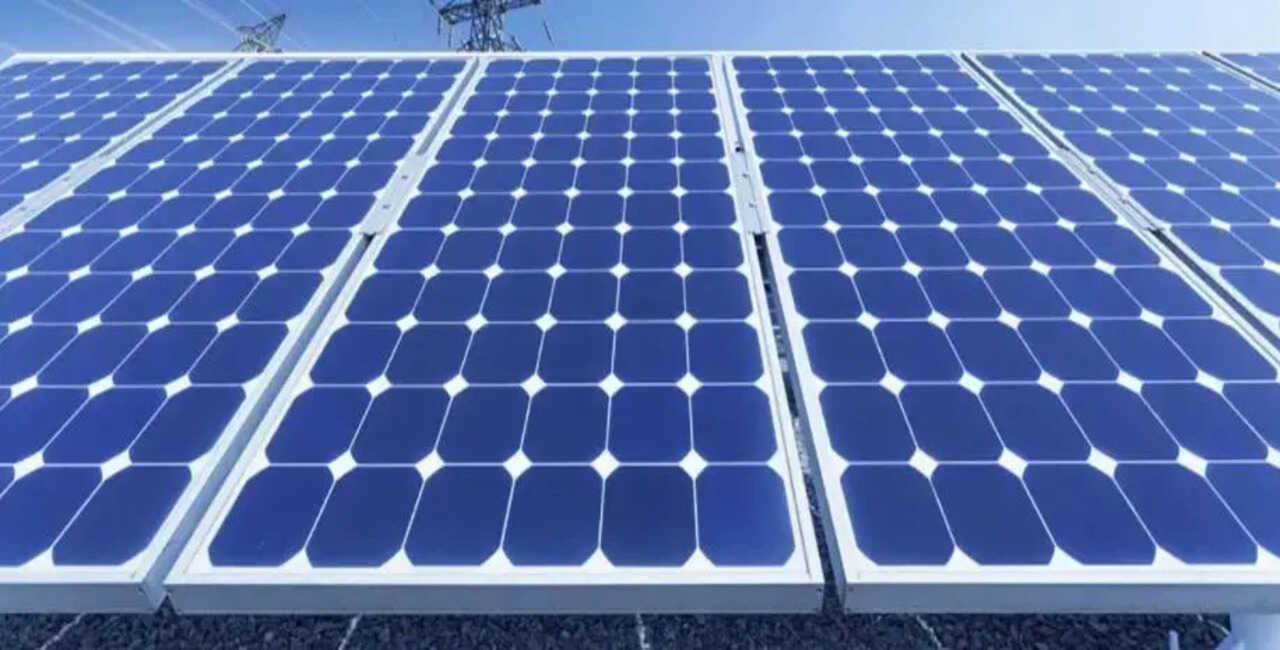Are Solar Grants Real?

In an era marked by a growing environmental consciousness and an urgent need for sustainable energy solutions, solar power has emerged as a beacon of hope for a cleaner and more sustainable future. As individuals and businesses increasingly seek to harness the power of the sun, the quest for financial support to make solar installations more accessible has intensified. One common avenue of support is through solar grants.
However, the question looms large: Are solar grants real, or are they merely elusive promises in the pursuit of renewable energy? In this exploration, we delve into the landscape of solar grants, dissecting their legitimacy, availability, and impact on the broader mission of transitioning to a solar-powered world. Join us as we unravel the layers of this crucial inquiry, shedding light on the reality of solar grants and their role in shaping the renewable energy landscape.
Understanding Solar Grants
Solar grants play a crucial role in promoting the adoption of solar energy by providing financial assistance to individuals and businesses looking to invest in solar technologies. This section will delve into the definition, purpose, types of organizations offering solar grants, and the eligibility criteria associated with these grants.
Solar grants refer to financial assistance provided to individuals, businesses, and organizations to support the installation and utilization of solar energy systems. The primary purpose of these grants is to accelerate the transition to renewable energy sources, reduce carbon emissions, and promote sustainability. By offering financial incentives, governments, non-profit organizations, and private entities aim to encourage the adoption of solar technologies, making them more accessible and affordable for a wider range of stakeholders.
Types of Organizations Offering Solar Grants
- Government Agencies: Many governments around the world allocate funds to support the development of renewable energy projects. These grants are often administered by environmental or energy departments at the national, regional, or local levels.
- Non-Profit Organizations: Various non-profit entities, including environmental organizations and foundations, contribute to the promotion of solar energy through grants. These organizations are driven by a commitment to environmental conservation and often collaborate with other stakeholders to fund solar projects.
- Private Entities: Private companies, corporations, and foundations may offer solar grants as part of their corporate social responsibility (CSR) initiatives. These grants can support both community-based solar projects and individual efforts to adopt solar energy.
Eligibility Criteria for Individuals and Businesses
- Residential homeowners may be eligible for solar grants based on factors such as income level, location, and the type of solar project they intend to undertake. Some grants are specifically designed for low-income households to ensure inclusivity.
- Eligibility criteria for businesses seeking solar grants may include the size of the enterprise, its industry, and its commitment to sustainability. Some grants target small and medium-sized businesses, while others focus on large corporations willing to invest in substantial solar projects.
- Grant eligibility often depends on the nature and scope of the solar project. For instance, grants may prioritize projects with significant environmental impact, innovative technologies, or those benefiting underserved communities.
Government Solar Grants in the US

Government solar grants in the US are part of a broader strategy to encourage the transition to renewable energy sources, reduce greenhouse gas emissions, and promote sustainability. These grants are typically offered at the federal, state, and sometimes local levels. Here are some key aspects related to government solar grants in the US:
Federal Solar Incentives:
- The federal government has historically offered tax incentives to encourage the installation of solar energy systems. The Investment Tax Credit (ITC) has been a significant incentive, allowing homeowners and businesses to deduct a percentage of the cost of installing a solar energy system from their federal taxes.
Department of Energy (DOE) Grants:
- The Department of Energy (DOE) grants solar research and development projects. These grants aim to advance solar technologies, improve efficiency, and drive innovation in the solar industry.
USDA Rural Energy for America Program (REAP):
- The USDA's REAP program provides grants and loan guarantees to agricultural producers and rural small businesses for renewable energy systems, including solar. This program supports the installation of solar panels on farms and rural businesses, contributing to energy efficiency and sustainability.
State-Level Solar Grants:
- Many states offer solar incentives and grants. These can include rebates, tax credits, or direct financial support for solar installations. State programs vary widely, and some states have been more proactive than others in promoting solar energy.
Local Government Initiatives:
- In addition to federal and state programs, some local governments may offer their grants or incentives to promote solar adoption. These could include property tax incentives, expedited permitting processes, or direct financial support.
Environmental Protection Agency (EPA) Programs:
- The EPA may provide grants for solar projects that align with environmental goals. These grants can support initiatives such as community solar projects, energy efficiency programs, or educational efforts to raise awareness about solar energy.
Nonprofit and Foundation Grants:
- Various nonprofit organizations and foundations may also provide grants to support solar initiatives. These grants may focus on specific communities, educational programs, or projects with environmental and social impact.
Before embarking on a solar project, individuals, businesses, and organizations should thoroughly research available grants and incentives, as well as the eligibility criteria and application process. The landscape of government solar grants is subject to change, and staying informed about the latest programs and opportunities is essential for those interested in harnessing solar energy. It's advisable to consult with local authorities, energy agencies, and relevant organizations for the most up-to-date information on solar grants in the US.
Debunking Myths and Addressing Concerns
Common Misconceptions About Government Solar Grants
Misconception: Government solar grants are only for low-income households.
Reality: While some programs may prioritize low-income households, government solar grants are often available to a broader range of individuals, businesses, and organizations. Eligibility criteria vary, and many programs aim to encourage solar adoption across diverse demographics.
Misconception: Solar grants are too complex, and the application process is burdensome.
Reality: While the application process may have some paperwork, it is not inherently burdensome. Various resources, including online tools and assistance programs, are available to guide applicants through the process. Additionally, simplifications and streamlining efforts have been implemented to make it more accessible.
Misconception: Solar grants are only for homeowners.
Reality: Solar grants are not exclusive to homeowners; they are also available for businesses, agricultural enterprises, and nonprofits. Different programs cater to various entities, promoting a wide range of solar installations beyond residential properties.
Misconception: Solar grants are only applicable in sunny states.
Reality: Solar grants are available nationwide, irrespective of geographic location. While sunlight levels can impact efficiency, solar energy can still be harnessed in regions with less sunlight. Solar grants aim to support renewable energy adoption across the entire country.
Misconception: Government solar grants are only for new installations.
Reality: Many solar grant programs also support upgrades, expansions, and improvements to existing solar installations. This flexibility encourages the enhancement of current systems, ensuring that advancements in technology can be integrated seamlessly.
Clarifying the Role of Solar Grants in the Broader Context of Renewable Energy Initiatives
Solar grants play a crucial role in the broader context of renewable energy initiatives, contributing significantly to the transformation of energy landscapes. One of their primary functions is to diversify energy sources, promoting a shift away from traditional fossil fuels. By incentivizing the adoption of solar energy, these grants actively support the creation of a more resilient and sustainable energy grid. Additionally, solar grants align with global efforts to mitigate climate change. Solar power, a clean and low-emission energy source, aids in reducing overall carbon emissions, aligning with international sustainability goals, such as those outlined in agreements like the Paris Agreement.
Furthermore, solar grants stimulate economic growth by fostering innovation and creating job opportunities within the renewable energy sector. As businesses and individuals take advantage of these grants to invest in solar installations, local economies benefit, contributing to job creation and economic development. Beyond economic considerations, solar grants empower communities by providing them with the means to generate their clean energy. This decentralization of energy production enhances community resilience and can lead to greater energy independence at the local level.
In essence, solar grants are integral components of a comprehensive strategy to address environmental concerns, stimulate economic activity, and empower communities. Their role extends beyond individual projects, contributing to the broader transition towards a sustainable and environmentally conscious energy future. As governments and communities continue to embrace renewable energy initiatives, solar grants remain key instruments in shaping a cleaner, more resilient, and economically vibrant future.
FAQS

- Does the US subsidize solar energy?
The United States provides subsidies for solar energy. One significant form of subsidy is the federal Investment Tax Credit (ITC), which allows individuals and businesses to deduct a percentage of the cost of installing a solar energy system from their federal taxes. Various states may also offer additional incentives, such as rebates, grants, or tax credits, further promoting the adoption of solar power.
2. What are the solar incentives for 2023 in Florida?
As of 2023, Florida offers a sales tax exemption and a property tax exemption for solar energy systems. Solar rebates and grants are not currently available in Florida.
3. What are the incentives for solar panels in Texas in 2023?
Texas does not currently offer a state tax credit for solar energy installations. However, homeowners in Texas can still take advantage of the Residential Clean Energy Credit, which provides a credit of up to 30% of the cost of the solar installation.
Conclusion
Solar grants are indeed real and represent a tangible commitment by governments and organizations to promote the widespread adoption of solar energy. These grants play a pivotal role in fostering sustainability, mitigating climate change, and supporting economic growth.
While misconceptions and concerns may exist, understanding the legitimacy and significance of solar grants is crucial for individuals, businesses, and communities seeking to harness the benefits of clean and renewable energy. As governments continue to prioritize renewable energy initiatives, the reality of solar grants underscores their role in shaping a more sustainable and resilient energy future.

